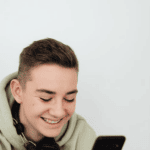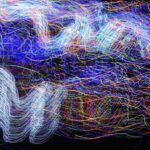A circular arrangement of chromatic colors in the order in which they appear in the spectrum. The purpose of the arrangement is to show the relationship between different colors and the results of color mixture.The color circle can be pictured by imagining the visible spectrum bent completely around so that the red is next to the violet. When set up in this way, complementary colors appear exactly opposite each other on the circumference. However, it has been found that colors in the green region have no single complementary in the visible spectrum, and therefore impure colors called extraspectral purples (mixtures of blue and red) have been added to the circle in order to fulfill the requirement that complementary colors be found at opposite points.The circle is also used to indicate the results of any mixture of two or more colors. The center of a line drawn from red to yellow falls in the orange region; therefore an equal mixture of the two will produce orange. If the colors are mixed in different proportions, the new color will be found somewhere between them—for example, a mixture of two parts of yellow and one part of red would be found at a point closer to the yellow.The circle also predicts the saturation or purity of color mixtures. The center of the circle represents a neutral gray, and the closeness of any line to this point indicates how saturated or unsaturated a color mixture will be. The line between two complementary colors always goes through the center of the circle and therefore they will produce gray when mixed in equal proportions. The red-yellow mixture yields a highly saturated orange because the two colors are close together on the circumference and the line drawn between them does not come near the center. Red and green, on the other hand, lie nearly opposite each other and a connecting line indicates a yellow of low saturation because it passes close to the center of the figure.Color circle principles apply only where surfaces emit or reflect light, but cannot be used for mixing paints since pigments reflect some wave lengths and absorb others. Blue paint, for example, reflects yellow-green, green, blue, and violet, but absorbs red, orange, and yellow. Yellow and blue are complementary on the color circle, and yield gray when mixed on a revolving color wheel, but when yellow and blue pigments are combined, they produce green. Therefore in mixing paints the important thing is to determine what colors finally reach the eye.












